Why the Night Before Matters More Than You Think
Think of your brain like a smartphone battery. You can pour in hours of study, brilliant strategies, and the latest practice tests, but if you don’t charge it properly overnight, performance drains fast. The night before an AP exam isn’t a last-minute cram session—it’s the final, decisive tune-up. What you do between dinner and sunrise impacts memory recall, focus, stress response, and even how you interpret tricky exam wording.

Mindset First: Calm Beats Chaos
Before we get tactical about sleep, food, and materials, set a mental intention: you’re not trying to squeeze new facts into your head; you’re preparing your body and mind to demonstrate what you already know. Replace “I must memorize one more chapter” with “I will rest deliberately so my brain can access what I’ve learned.” That shift alone reduces cortisol and helps you sleep.
Quick pre-sleep checklist for mindset
- Write down three specific wins from your studying this year—concrete things you did well.
- List one contingency for exam-day surprises (e.g., “If my device loses power, I will sign in with the backup laptop the proctor provides”).
- Plan a 10-minute wind-down routine (stretching, breathing, or reading something light).
Sleep: The Single Most Powerful Tool
Sleep consolidates memories. Deep sleep helps you store facts and procedures; REM sleep helps with problem-solving and pattern recognition—both crucial for AP exams. Aim for 7–9 hours. While everyone’s exact need is slightly different, most teenagers and young adults perform best within that range.
How to make that sleep happen
- Keep a consistent bedtime: try to go to bed and wake up within the same 60–90 minute window you used during practice days.
- Wind down 60 minutes before bed: dim lights, turn off nonessential screens, and avoid high-stakes study or emotionally charged conversations.
- Use a short, focused review only if it helps you feel settled—no new material. Try a 20–30 minute lightweight review of formula sheets or a short set of flashcards.
- If anxiety keeps you awake, write it down—one paragraph—and close the notebook. Externalizing worries helps the brain stop rehearsing them.
- Create a comfortable sleep environment: cool, dark, and quiet. If you usually use earplugs or a fan, have them ready for exam night.
What about naps?
Short naps during the day before the exam can refresh attention—20 to 30 minutes is ideal. Avoid long naps that push bedtime later or fragment sleep. If you’re used to a late nap routine, skip it and focus on an earlier bedtime.
Food and Hydration: Fueling Focus
Food affects cognition not just minutes after eating, but hours later through blood sugar stability, digestion comfort, and mood. The wrong meal can leave you sluggish or buzzing; the right one sets a steady baseline for performance.
What to eat for dinner the night before
- Prioritize balanced meals: lean protein (chicken, fish, tofu), complex carbs (brown rice, sweet potato, whole-grain pasta), healthy fats (avocado, olive oil), and vegetables.
- Avoid heavy, greasy, or extremely spicy food that might upset digestion or interfere with sleep.
- Avoid large amounts of simple sugars late at night—they can cause energy spikes and crashes that disturb rest.
- Comfort counts: choose a familiar meal. New foods or meals you rarely eat increase the risk of an upset stomach.
Breakfast on exam morning (quick guidance)
Eat a breakfast that balances protein and complex carbs to support sustained attention. Examples: Greek yogurt with berries and a sprinkle of granola, whole-grain toast with nut butter and banana slices, or scrambled eggs with spinach and a small piece of fruit.
Hydration strategy
- Hydrate steadily during the day before the exam. Don’t binge-drink water late at night to the point of waking for the bathroom.
- Bring a water bottle for the short break (if allowed) or plan to get a drink during the scheduled break—check your exam type’s policies.
Materials: What to Pack and How to Pack It
Being organized removes low-level stressors that sap cognitive bandwidth. Pack the night before and do a quick in-the-door check the morning of the exam. If you’re taking a digital AP exam, the material list changes a bit, so confirm the mode of your exam beforehand and follow those rules exactly.
Standard checklist for most AP exams
- Student ID or accepted photo ID (if required).
- AP ID label sheet or AP ID number written down (if applicable).
- Approved calculators (for courses that allow them) and fresh batteries/charger.
- Pencils and pens (No. 2 pencils for certain multiple-choice sheets; black or dark blue ink for free-response where required).
- Watch that is not a smartwatch.
- Charged testing device with charging cable and any required accessories (external keyboard for tablets, wired headset if needed) if you’re taking a digital exam.
- Snacks or water if permitted during scheduled breaks and approved by the proctor.
- Comfort items (sweater, small packable layers) if the testing room might be cold.
Pack like you’re planning for a smooth performance
Lay everything out on a table and run through a mock “leaving home” routine: phone? keys? ID? testing device? charger? pencils? If you’re driving, put the bag in the car trunk the night before so you aren’t tempted to open it and rummage, which can create anxiety.
Timing and a Practical Night-Before Timeline
Below is a suggested timeline you can adapt to your own exam start time and personal rhythms. The idea is to front-load preparation and wind down intentionally.
| Time Before Exam | Suggested Actions |
|---|---|
| 24–12 hours prior | Complete light review of big-picture concepts and formula sheets. Confirm test time, location, and materials. Charge devices and pack your bag. |
| 12–6 hours prior | Eat balanced meals; hydrate steadily. Do a brief (20–30 minute) focused practice only if it calms you. Avoid starting new topics. |
| 6–3 hours prior | Finish any gentle review. Start wind-down: no screens with bright blue light, dim the lights, and switch to paper notes if needed. |
| 3–1 hours prior | Relaxation time—stretch, breathe, or take a walk. Lay out clothes and double-check your bag. Set an alarm and a backup alarm. |
| Bedtime (aim for 7–9 hours) | Sleep. If you’re restless, try a short mindfulness exercise: focus on breathing for 5–10 minutes. |
Exam Morning: Gentle Starts and Smart Moves
The morning should be calm, measured, and slightly ritualized. Avoid last-minute cramming. You’ve already done the hard work—this is about priming your system for best performance.
Morning routine suggestions
- Wake up with enough time to avoid rushing—aim for two hours before the test, depending on travel time.
- Have the planned breakfast and hydrate moderately.
- Run through a 5-minute mental checklist: bag? ID? pencils? charger? calculator? watch?
- Do a quick five-minute warm-up: a couple of arithmetic problems, a short practice prompt, or a single free-response outline to get the brain in gear.
- Use positive self-talk: replace “What if I forget everything?” with “I have practiced this; I am prepared to do my best.”
Stress-Busting Techniques You Can Use Anywhere
Stress is normal, but not all stress helps. Here are practical, portable techniques you can use the night before or during the brief exam break.
Simple breathing
- Box breathing: inhale 4, hold 4, exhale 4, hold 4. Repeat 3–5 times to lower heart rate.
Grounding exercise
- 5-4-3-2-1 method: name 5 things you can see, 4 you can touch, 3 you can hear, 2 you can smell, 1 you can taste (or imagine tasting). It brings focus to the present.
Micro-movement
- During breaks, do gentle neck rolls, shoulder shrugs, and ankle circles to release tension and boost blood flow to the brain.
What to Avoid the Night Before
Some mistakes feel productive but backfire.
- All-night cramming: it reduces retention and increases anxiety.
- New or spicy foods that may upset your stomach.
- Excessive caffeine late in the day—remember that caffeine’s half-life can be long, especially if you’re not used to it.
- High-stress conversations or social media doomscrolling—these raise cortisol and fragment attention.
Practice Examples: Small Routines That Make a Big Difference
Here are two concrete examples of night-before routines tailored to different student profiles. Adapt them to your needs.
Scenario A: The Calculator AP (Physics or Calculus)
- Evening: Review the formulas you use most. Open one past free-response and read the prompts—don’t solve completely; note the approach.
- Pack: calculator with fresh batteries, extra pencils, ID, and a backup method to show work (scratch paper rules depend on exam type).
- Sleep plan: aim for 8 hours; set alarm with 15-minute buffer for traffic.
- Morning: protein-rich breakfast, quick mental outline of problem-solving steps.
Scenario B: The Language Exam (AP Spanish or AP French)
- Evening: practice speaking for 5–10 minutes out loud on familiar prompts; skim culture notes if it calms you.
- Pack: ID, pens or pencils as required, any allowed audio devices or headsets for digital exams.
- Sleep plan: avoid late-night foreign-language media if it keeps your brain active; choose an easy read in your native language to relax.
- Morning: vocabulary warm-up (flashcard review for 10 minutes), a balanced breakfast, and hydrate.
How Personalized Tutoring Fits In—A Natural Boost, Not a Crutch
Personalized tutoring can be a meaningful part of your prep if used the right way. A few targeted sessions in the weeks before the exam can clarify weak points, rehearse exam strategy, and build confidence. For example, Sparkl’s personalized tutoring offers 1-on-1 guidance, tailored study plans, expert tutors, and AI-driven insights that help you prioritize what to review and how to practice. The night before, your tutor’s role is minimal—ideally, they’ve helped you create a plan you can follow calmly: what to pack, what to review lightly, and how to manage stress.
Printable Night-Before Checklist
Use this checklist the evening before and again the morning of the exam. Keep it simple and put a check next to each item as you complete it.
| Item | Done (✔) |
|---|---|
| Confirm exam time and location | |
| Pack ID and AP ID number | |
| Pack approved calculator and backups | |
| Pencils, pens, eraser | |
| Testing device charged and Bluebook installed (if digital) | |
| Set alarm and backup alarm | |
| Balanced dinner and plan for breakfast | |
| Wind-down routine scheduled | |
| Lay out clothes and testing-day layers | |
| Relax for 30–60 minutes before bed (no screens) |
Common Concerns and Short Solutions
What if I wake up and feel panicked?
Pause. Use 3 rounds of box breathing (inhale-hold-exhale-hold for counts of four). Drink a glass of water. Remind yourself of a single memory from studying that went well—this anchors your confidence.
What if my device or calculator fails?
Have a backup plan: charged spare batteries, an extra device if possible, or know where the proctored backup devices are. Most testing centers have contingencies—your calm handling of the situation helps more than frantic troubleshooting.
What if I didn’t sleep well?
Don’t overcompensate with caffeine. Use hydration, a protein-rich breakfast, and short focused breathing exercises. Performance dips after a poor night are real, but many students still do well with targeted focus and strategy.
After the Exam: Recover and Reflect
When you finish, take time to decompress. You’ve run a marathon. Celebrate small wins (you answered a tough question, you used a method that worked) and note one specific thing you’ll tweak for next time. If you’re still taking other exams, use a short active recovery: snack, walk, and then a light review of logistics for your next test day.

Final Thoughts: Preparation Is a Flow, Not a Panic
The night before an AP exam is not the place for heroics. It’s where preparation transitions into performance. Sleep, balanced food, and an organized materials plan create the conditions for your knowledge to shine. The small rituals—packing your bag, laying out clothes, writing down one contingency—reduce friction and free up mental energy.
If you’ve built a consistent study routine, used targeted practice, and created the physical conditions for rest and focus, you’re already set up to do your best. If you want tailored help to shape those final days—strategy for pacing a free-response, a calm pre-exam routine, or a final content check—consider booking a focused session with a personalized tutor who can translate your strengths into a practical exam plan. The night before, though, choose calm and clarity. Your brain will thank you.
One Last Tip
On exam day, treat yourself the way you would treat a friend before something important: with confidence, with kindness, and with practical support. You’ve prepared more than you think. Breathe. Eat. Pack. Sleep. Then go show what you know.



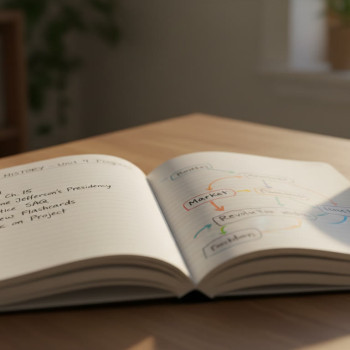
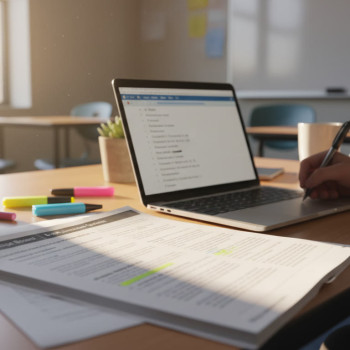

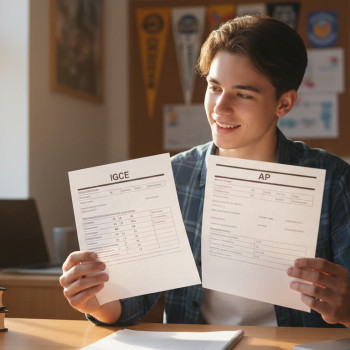

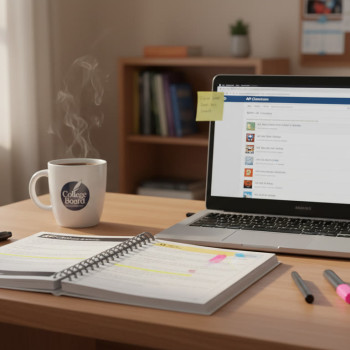

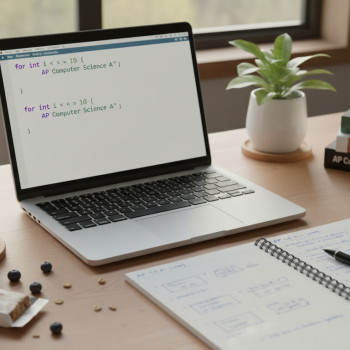









No Comments
Leave a comment Cancel